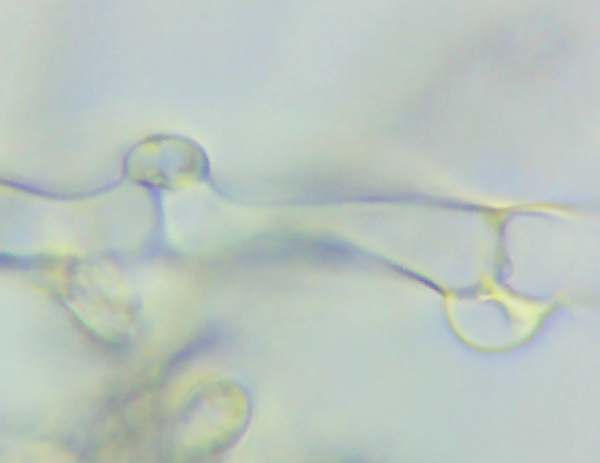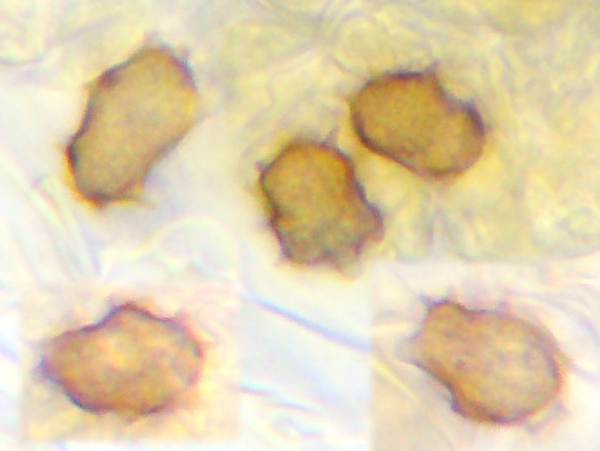Thelephora penicillata Fr. - Urchin Earthfan
Phylum: Basidiomycota - Class: Agaricomycetes - Order: Thelephorales - Family: Thelephoraceae
Distribution - Taxonomic History - Etymology - Identification - Culinary Notes - Reference Sources
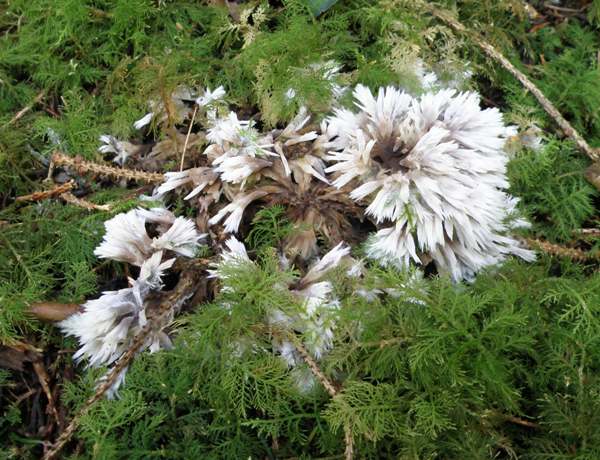
Thelephora penicillata is a kind of earthfan fungus that forms rosette-like clusters among mosses on the forest floor, most often under spruce trees. These short-lived fruitbodies can be found from late summer through to the end of autumn. (This and other earthfans are known to form mycorrhizal relationships with forest trees; however, it is likely that they can also live as saprobes, feeding on dead and decaying timber, needles and leaves on the forest floor.)
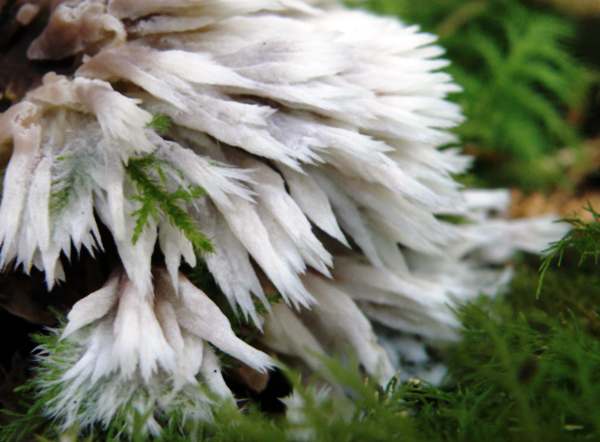
When growing on the forest floor, even a ‘good’ specimen has rather a downtrodden appearance. These fairly common earth fans are special in at least one respect, however: rare saprophytic orchids including Epipogium aphyllum, the Ghost Orchid, and Coralorrhiza trifida, the Coralroot Orchid, are reported to parasitise the mycorrhizae formed between trees and this particular fungus species. (The Ghost Orchid in particular is much rarer than Thelephora penicillata, unfortunately.)
Distribution
Thelephora penicillata is fairly common in wet acidic conifer plantations throughout Britain and Ireland; it is sometimes found in mossy areas under broadleaf trees, too.
This woodland fungus occurs throughout northern mainland Europe, and it is recorded in Russia and in North America.
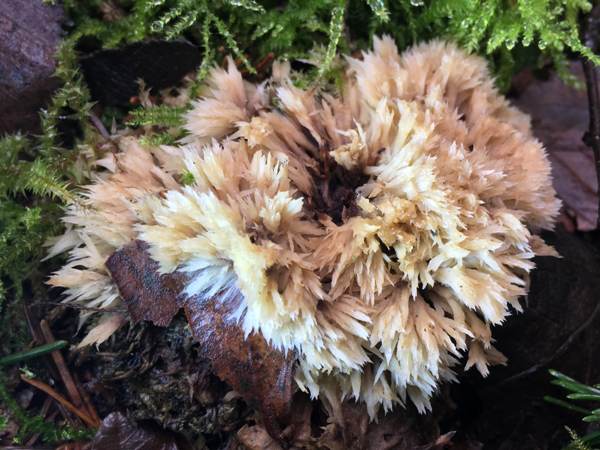
Taxonomic history
When the great Swedish mycologist Elias Magnus Fries described this fungus in 1821 he gave it the binomial scientific name Thelephora penicillata by which mycologists still refer to it to this day.
Both from earlier publications and more recent ones, Thelephora penicillata has acquired several synonyms including Thelephora mollissima Pers., Thelephora spiculosa Fr., and Phylacteria mollissima (Pers.) Rea.
Etymology
The origin of the generic name Thelephora is the Greek word thele- meaning nipple, and -phorus meaning bearing or carrying. Can you see the nipple-bearing features in these fungi? Never mind! The specific epithet penicillata means 'like a paintbrush'.
Identification Guide
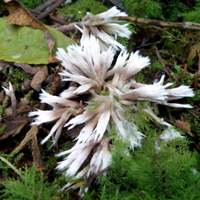 |
FruitbodyShort-lived rosette-like fans lying low on the forest floor looking as though they have been trodden on, even when they have not; purplish-brown at the base and white or cream towards the branched and pointed tips, turning brown from the centre; 4 to 15cm across; individual spines 2 to 7cm long. |
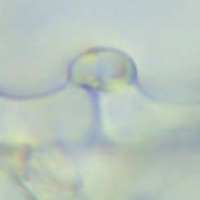 |
Hyphal StructureThe tramal hyphae are monomitic, typically 4-7µm wide, with clamp connections.
|
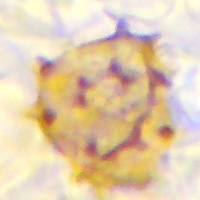 |
SporesAngularly ellipsoidal, 7-10 x 5-7µm; ornamented with irregular spiny warts.
Spore printPurplish-brown. |
Odour/taste |
The odour is earthy but not strong, and the taste of this fungus is mild but not distinctive. |
Habitat & Ecological role |
In coniferous and broadleaf forests. |
Season |
July to November in Britain and Ireland. |
Similar species |
The much more swarthy Earthfan Thelephora terrestris is seen most often on dry sandy soils, particularly with pines and less frequently under broadleaf trees; it also occurs occasionally with various eucalypts. |
Culinary Notes
Thelephora penicillata is an insubstantial and inedible fungus. It is therefore of no culinary interest and we do not have any recipe information for this species.
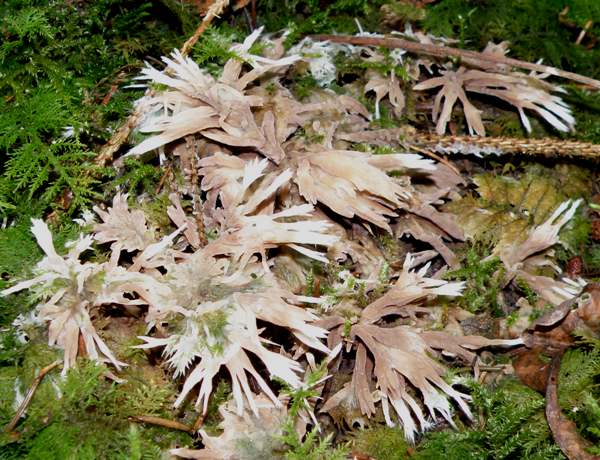
Acknowledgements
This page includes pictures kindly contributed by Simon Harding.
Reference Sources
Fascinated by Fungi, 2nd Edition, Pat O'Reilly 2016, reprinted by Coch-y-bonddu Books in 2022.
Dictionary of the Fungi; Paul M. Kirk, Paul F. Cannon, David W. Minter and J. A. Stalpers; CABI, 2008
Taxonomic history and synonym information on these pages is drawn from many sources but in particular from the British Mycological Society's GB Checklist of Fungi.
Fascinated by Fungi. Back by popular demand, Pat O'Reilly's best-selling 450-page hardback book is available now. The latest second edition was republished with a sparkling new cover design in September 2022 by Coch-y-Bonddu Books. Full details and copies are available from the publisher's online bookshop...

